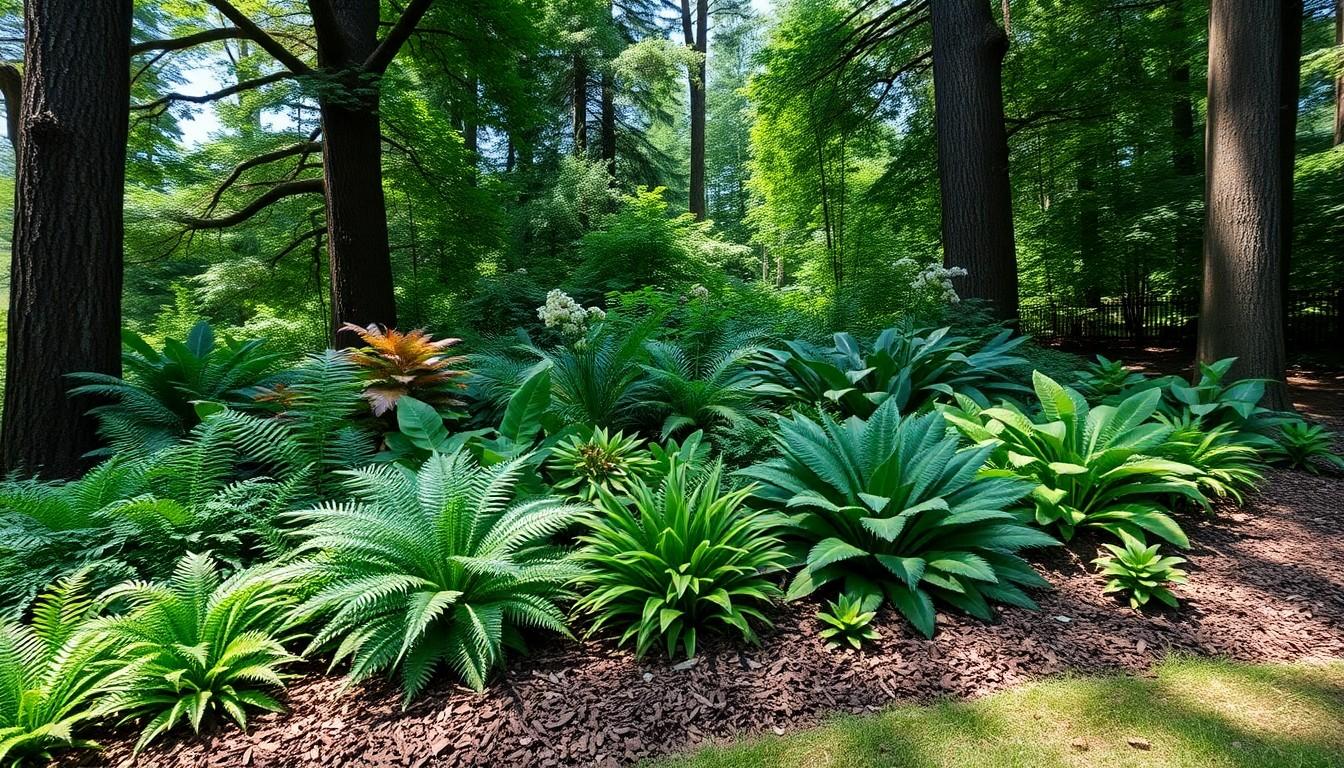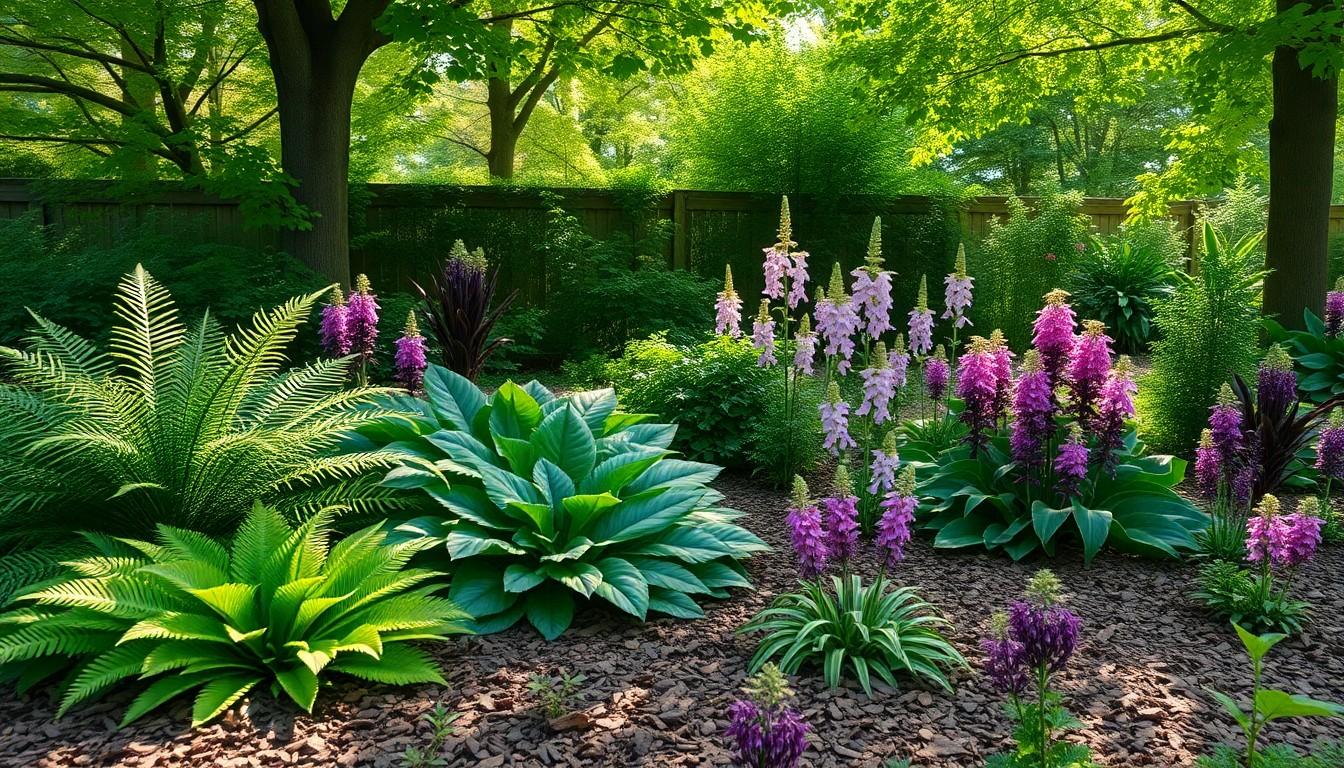Creating a low maintenance shade garden might sound like a gardening myth, like finding a unicorn or getting a cat to fetch. But fear not, because it’s not only possible, it can also be a stunning addition to any yard. Imagine lush greenery thriving under the canopy of trees, all while you sip your iced tea, blissfully avoiding the back-breaking work of traditional gardening.
With the right plant choices and clever design, anyone can transform a dull, shady spot into a vibrant oasis. Whether it’s for the busy professional or the self-proclaimed plant killer, this guide will show how to cultivate a beautiful shade garden that practically takes care of itself. So grab your gardening gloves, or don’t—who needs them when you can just admire your low-maintenance masterpiece from the comfort of your hammock?
Low Maintenance Shade Garden Design
Creating a low maintenance shade garden enhances outdoor spaces while reducing gardening efforts. Achieving an inviting, green retreat under trees requires strategic planning and plant selection.
Importance of Shade in Garden Design
Shade plays a crucial role in garden design by creating microclimates. Areas under tree canopies provide protection from intense sun, minimizing water evaporation. Certain plants thrive in these conditions, offering vibrant foliage and blooms. Shade gardens attract various wildlife, including birds and beneficial insects, enhancing biodiversity. Incorporating shade into garden layouts allows for creative designs, transforming dull spaces into lush retreats.
Benefits of Low Maintenance Gardens
Low maintenance gardens offer numerous advantages for busy individuals. Reducing time spent on upkeep allows more enjoyment of the outdoor space. Choosing hardy, drought-resistant plants decreases watering needs and minimizes soil erosion. Mulching conserves moisture, discourages weeds, and enhances visual appeal. A thoughtfully designed low maintenance garden can flourish with minimal care, promoting relaxation without the hassle of constant attention. Cost-effectiveness is another benefit, as low maintenance gardens typically require fewer resources and materials.
Key Elements of Low Maintenance Shade Gardens

Creating a low-maintenance shade garden hinges on selecting the right plants and managing soil effectively. Both aspects play critical roles in building a thriving space with minimal effort.
Choosing the Right Plants
Opt for native plants that adapt well to shaded environments. Ferns, hostas, and astilbes thrive in low-light conditions, offering lush greenery and colorful blooms. Incorporating ground covers like creeping thyme or ajuga reduces weed growth and minimizes maintenance. Select perennials that require less intervention, such as heucheras or brunneras, for consistent beauty throughout the seasons. Prioritize drought-resistant plants, which require limited watering and care, ensuring a sustainable and easy-to-manage garden.
Soil and Mulching Considerations
Assessing soil quality is essential for plant health. Well-draining soil enriched with organic matter supports root systems. Amending existing soil with compost boosts nutrients and improves moisture retention. Applying a thick layer of mulch regulates soil temperature, suppresses weeds, and retains moisture. Organic mulches, like wood chips or straw, break down over time, enriching the soil further. Choose the right mulch depth, ideally 2 to 3 inches, to maximize benefits while minimizing maintenance tasks.
Design Techniques for Shade Gardens
Creating a visually appealing shade garden involves specific design techniques. These strategies enhance the aesthetic while ensuring low maintenance requirements.
Layering and Texturing Plants
Layering plants adds depth and visual interest to shade gardens. Start with taller plants at the back or center, creating a backdrop with species like ferns or astilbes. Gradually layer shorter plants, such as hostas or sedges, in front to create a seamless transition. Texturing different foliage types also enhances the landscape, combining shiny leaves with matte finishes for contrast. Incorporating a mix of leaf shapes and colors brings life to shaded areas, encouraging a diverse ecosystem that attracts pollinators and enhances biodiversity.
Incorporating Hardscapes
Integrating hardscapes provides structure and functionality in shade gardens. Use stone pathways to define walking areas and guide visitors through the garden. Incorporate benches or seats for relaxation amidst lush greenery, ensuring appealing focal points throughout the space. Adding raised beds can also create defined sections for planting while improving drainage and soil quality. Consider using decorative rocks or gravel to reduce weed growth, further supporting the garden’s low-maintenance appeal.

Maintenance Tips for Shade Gardens
Maintaining a shade garden requires strategic planning. Proper care ensures thriving plants while minimizing effort.
Watering Strategies
Watering should align with the needs of shade plants. Regular checks on soil moisture help determine irrigation frequency. During hot, dry spells, plants in shaded areas may require additional watering to prevent stress. Drip irrigation or soaker hoses provide consistent moisture without over-saturating the soil. Adjustments depend on the specific plants, as some tolerate drier conditions better than others. Using mulch around plants helps retain moisture, reducing the watering frequency and promoting healthier growth.
Pruning and Care
Pruning serves multiple purposes in a shade garden. Regularly removing dead or damaged foliage encourages new growth and maintains overall aesthetics. Targeted cuts can enhance air circulation, helping to prevent fungal diseases. Many shade plants benefit from an annual trim in early spring before new growth begins. Assessing the conditions of each plant allows for necessary adjustments without compromising health. Observing growth patterns also ensures the garden remains vibrant and inviting.
Relaxation and Enjoyment
Creating a low-maintenance shade garden is a rewarding endeavor that allows individuals to enjoy the beauty of nature without the burden of extensive upkeep. By selecting the right plants and employing thoughtful design strategies, anyone can transform a shaded area into a vibrant oasis.
The focus on native and hardy plants ensures a thriving garden that attracts wildlife while minimizing water needs. With proper soil management and the integration of hardscapes, the garden becomes not only visually appealing but also functional.
Ultimately, a well-planned shade garden offers a serene retreat where relaxation and enjoyment come effortlessly, making it a perfect choice for busy lifestyles.

